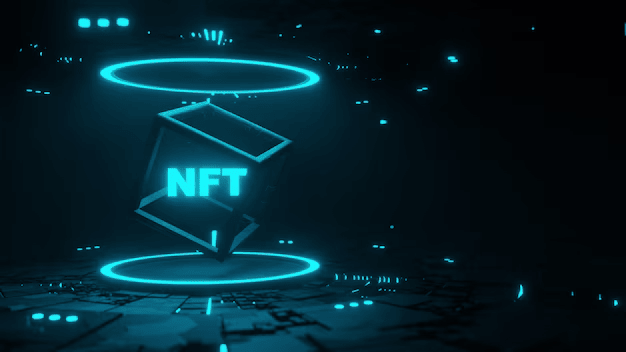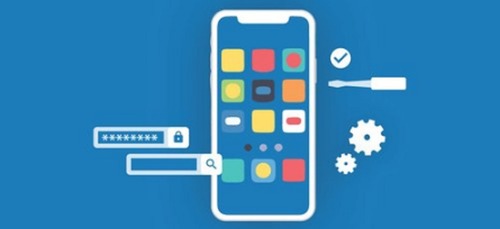Embracing the Digital Renaissance: A Deep Dive into NFT Tokenization
In a world where innovation propels us into uncharted territories, the convergence of physical and digital realms has given rise to a groundbreaking phenomenon—NFT tokenization. Picture the Mona Lisa gracing your digital wall, a vintage car roaring to life in your virtual garage, and the grandeur of real estate just a click away. Welcome to the future of asset tokenization, a realm where nft physical assets metamorphose into vibrant digital entities, breathing life into the concept of Non-Fungible Tokens (NFTs).
Deciphering Asset Tokenization on the Blockchain
Asset tokenization, also known as NFT tokenization, is the process of leveraging blockchain technology to convert tangible assets into digital counterparts. This intricate procedure involves selecting the asset for tokenization, validating its authenticity and value, transforming it into a digital format, and ultimately generating a unique non-fungible token representing ownership. These NFTs can then be seamlessly traded or sold on blockchain networks, heralding a new era of value extraction from physical assets.
Unveiling the Benefits of Asset Tokenization
The allure of asset tokenization lies in the myriad benefits it bestows upon participants. Let’s delve into some of these advantages that have propelled NFT tokenization into the spotlight.
Uniqueness and Scarcity
NFTs, by design, are one-of-a-kind and irreplicable. Each token possesses distinctive properties and metadata, ensuring unparalleled uniqueness. This characteristic makes NFTs the ideal vehicle for representing ownership of rare digital assets such as digital art, collectibles, and virtual real estate.
Proof of Authenticity and Ownership
Blockchain technology underpins NFTs, providing an immutable record of ownership and authenticity. The decentralized nature of the blockchain ensures that the ownership history of an NFT remains traceable back to its original creator.
Interoperability and Standardization
NFTs adhere to open standards like ERC-721 or ERC-1155 on the Ethereum blockchain, fostering easy transferability between different ecosystems. This seamless interoperability enhances the experience for both creators and collectors.
Enhanced Monetization for Creators
NFTs empower creators to directly monetize their digital creations without intermediaries. Artists can tokenize their work, establishing a direct connection with consumers and eliminating the need for traditional middlemen.
Fractional Ownership and Liquidity
NFTs can be divided into smaller fractions, enabling fractional ownership. This opens doors to shared ownership, investment opportunities, and access to high-value assets that were previously out of reach for many.
Programmability and Smart Contracts
Smart contracts embedded within NFTs enable dynamic and programmable functionalities. Rules and conditions, such as automatic royalty distribution to creators upon each sale or unlocking specific content based on predefined conditions, can be seamlessly executed.
In essence, NFTs offer unique advantages like provable ownership, scarcity, direct monetization for creators, fractional ownership, and heightened community engagement. Despite facing criticism and challenges, the potential of NFTs to revolutionize digital ownership remains undeniably thought-provoking.
Navigating the Landscape: How Does Asset Tokenization Work?
Understanding the process of asset tokenization requires a grasp of the pivotal role smart contracts play. Smart contract wallets serve as the linchpin in the transformation of real-world assets into digital ones. Coded agreements on the blockchain automate the control and execution of digital tokens backed by tangible assets. These self-enforcing and self-executing contracts ensure transparency, accuracy, and efficiency in the tokenization process.
From a technical standpoint, asset tokenization involves creating an informatic code that encapsulates the essential characteristics of the asset. Typically written in Solidity, a programming language for Ethereum smart contracts, this code facilitates user interaction with the digital representation of the asset.
Embarking on the Tokenization Journey: Step-by-Step Guide
For those looking to embark on the NFT tokenization journey, a step-by-step guide is essential. Here’s a comprehensive overview of the key stages involved:
- Asset Creation or Selection: Choose or create the digital asset slated for NFT tokenization, ranging from art to real estate or collectibles.
- Verification of Authenticity and Value: Utilize tools like blockchain-based registries or third-party services to verify asset authenticity and value.
- Digitizing the Assets: Convert the asset into a digital format, such as a high-resolution image or a 3D model, forming the basis for the NFT.
- Wallet Setup: Create a digital wallet compatible with the chosen blockchain platform, securely storing associated private keys.
- Platform Selection: Choose a suitable NFT marketplace or platform for minting the NFT, considering factors like fees, community, and features.
- Metadata and Tokenization: Prepare metadata containing asset information, title, description, and relevant details, associating it with the NFT.
- Minting the NFT: Initiate the minting process, creating a smart contract on the blockchain representing the unique NFT. Metadata is often stored on decentralized systems like IPFS.
- Token Sale or Distribution (Optional): List the NFT for sale or auction on the chosen marketplace, setting parameters like price and bidding details.
- Ownership Transfer and Secondary Sales: Record subsequent transfers on the blockchain, ensuring a transparent ownership history and potential royalties for the creator.
- Engagement and Community Building: Actively engage with the NFT community, leveraging social media and collaborations to enhance the visibility and value of the NFT.
It’s crucial to note that specific steps and platforms may vary based on the chosen blockchain and marketplace for NFT tokenization.
Navigating the Risks: Challenges in NFT Tokenization
While NFT tokenization presents an array of opportunities, it comes with its share of risks and challenges. Awareness of these potential drawbacks is paramount:
- Lack of Regulation: The nascent nature of the NFT market has resulted in a lack of comprehensive regulation, introducing uncertainties around legal frameworks and consumer protection.
- Market Volatility: NFT values can experience significant fluctuations due to market speculation, trends, and hype, necessitating careful consideration by investors.
- Counterfeit and Authenticity Concerns: Despite blockchain’s proof of ownership, instances of counterfeit or fraudulent NFTs highlight the need for due diligence in verifying creators, platforms, and assets.
- Scalability and Network Congestion: High demand for NFTs can lead to scalability issues and network congestion on certain blockchains, affecting transaction times and user experience.
- Copyright and Intellectual Property Challenges: NFTs often involve tokenizing digital creations, raising concerns about copyright infringement and intellectual property disputes.
- Limited Liquidity and Secondary Market Risks: Some NFTs may face limited liquidity in secondary markets, posing challenges for investors looking to sell. Price manipulation and lack of standardized pricing mechanisms add to the risks.
Conclusion
The potential of NFTs to redefine digital ownership and unlock new realms of creativity is undeniable. However, participants in the NFT market must approach it with a discerning eye, conducting thorough research and risk assessments to navigate the evolving landscape successfully. As we stand at the crossroads of the digital renaissance, the journey into NFT tokenization promises both excitement and challenges, ultimately shaping the future of ownership and creativity.
Read Also: Everything You Need to Know About Google Analytics





